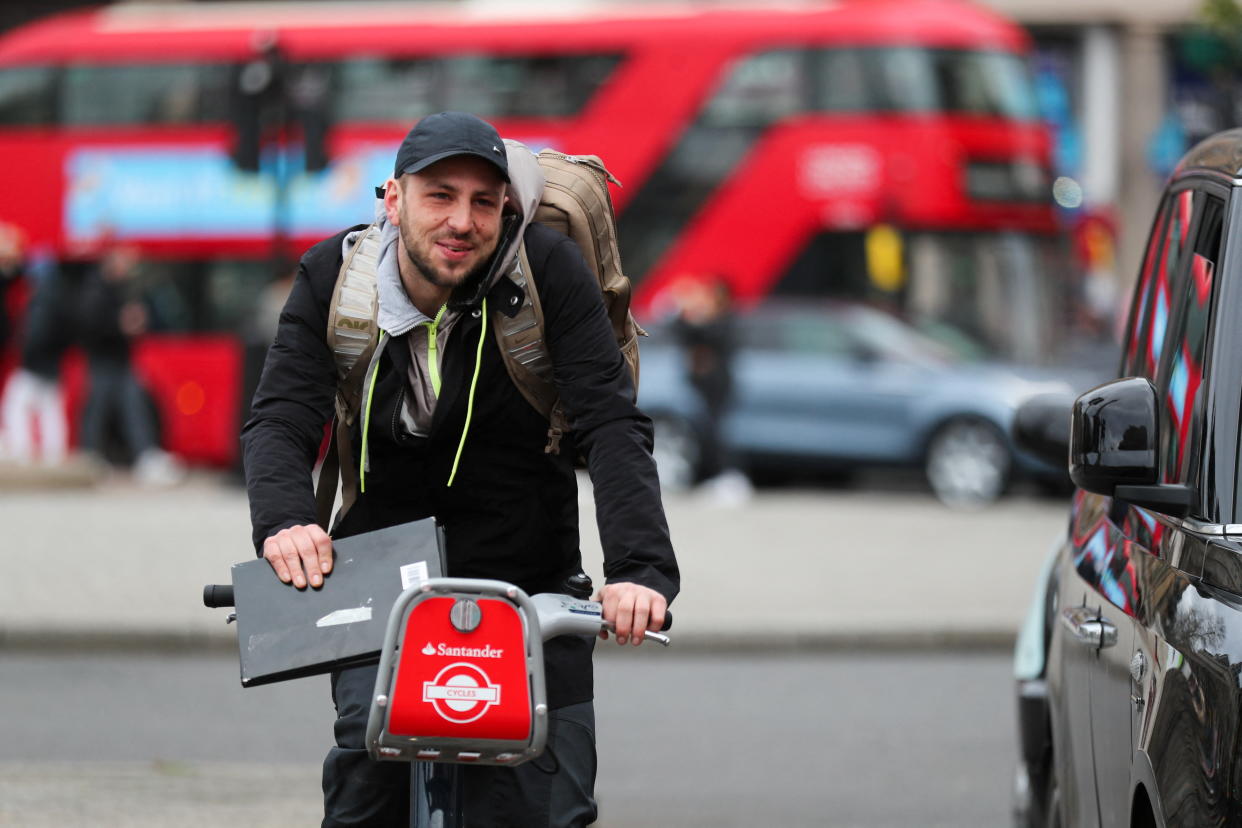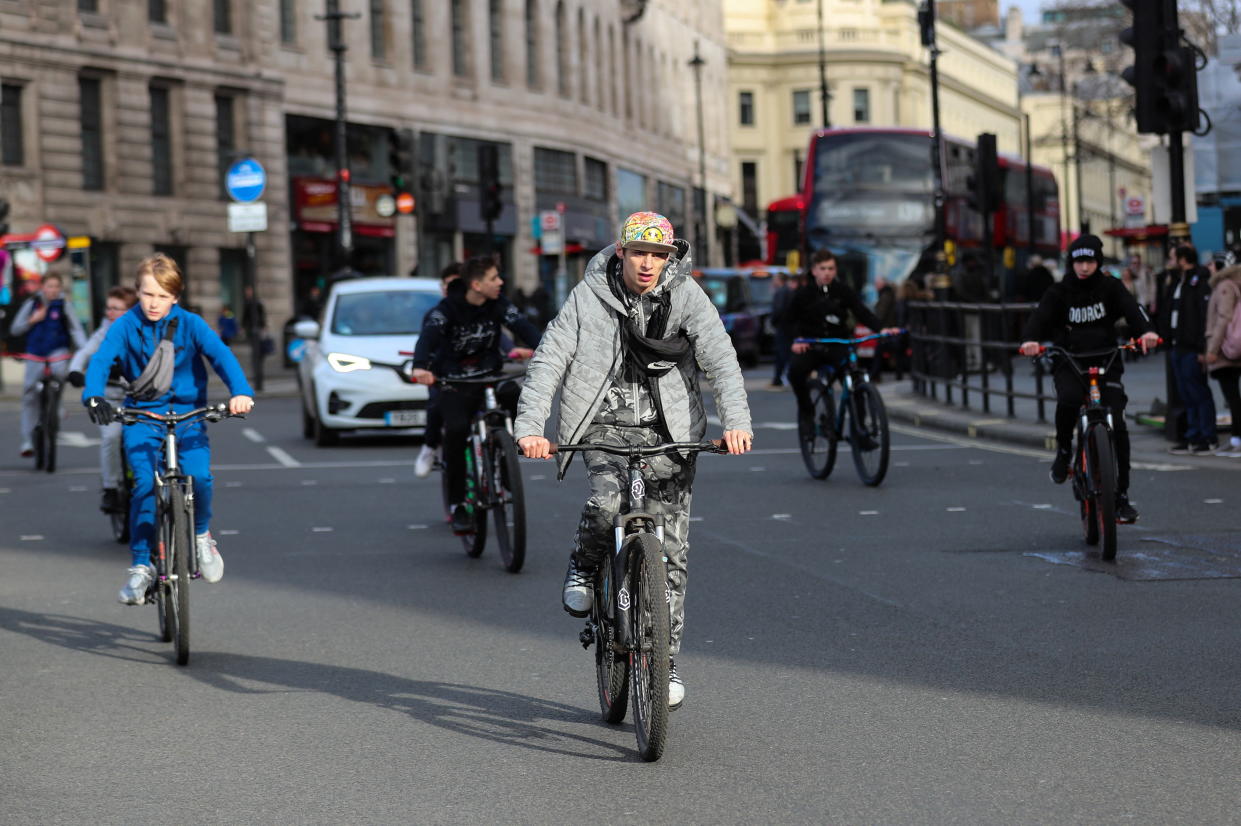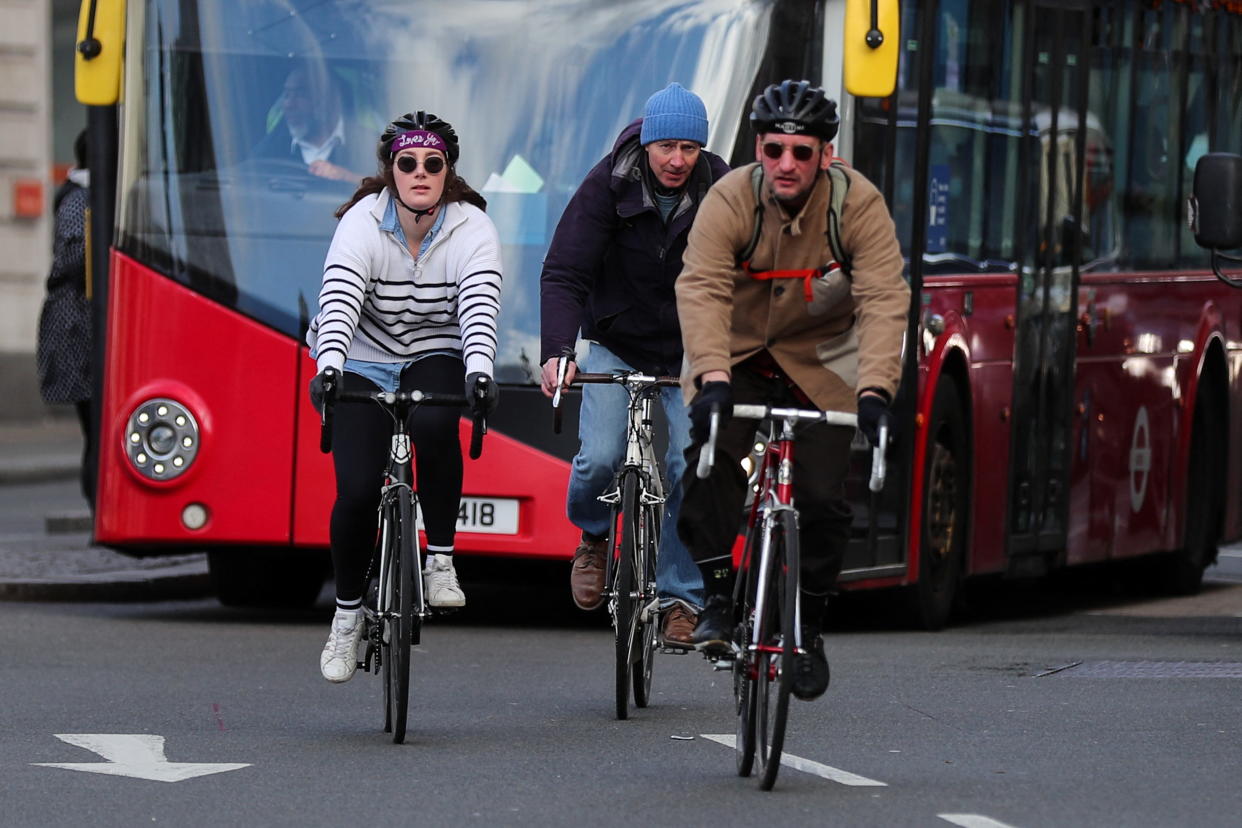Cyclists ride in middle of road under new Highway Code amid concern over driver awareness

Cyclists have been riding in the middle of the road as new Highway Code rules came into force on Saturday.
Under the new guidance, cyclists are advised to ride in the centre of lanes on quieter roads, in slower-moving traffic, and when approaching junctions, to make themselves as visible as possible.
Traffic should also give way to pedestrians crossing or waiting to cross at junctions as part of the new hierarchy of road users.
But concerns have been raised after an AA survey indicated 33% of drivers were unaware of the changes.
AA president Edmund King said there had been no reports from their patrols of anything going wrong but it was “early days”.
Motorists have criticised the new guidance on the first day, with one person tweeting: “I don’t care what the new Highway Code says, if you’re a cyclist and ride in the middle of the road or side by side, you’re selfish.”
Another driver added: “So this government spends millions on cycle lanes, then introduce a new highway code encouraging cyclist to cycle in the middle of the road??? What a farcical!”
A Twitter user wrote: “Mostly impossible where i live to safely leave a 1.5m gap between cyclists & vehicles, this would mean driving into wrong side of road most of the time, poorly thought.”
AA president King described how he had personally been out on a bicycle, in a car and on foot on Saturday, saying: “On each occasion, the particular right of way did seem to work.

“The truck gave way to me and when I was on a cycle I gave way to pedestrians in the road.”
Read more: Test your knowledge of the new Highway Code rules coming into effect today
King expressed concern at the potential impact of the guidance to give way to pedestrians at junctions but admitted many of the changes were “just common sense and courtesy”.
“Drivers will have to make their own judgments on what they should do in the scenarios they find themselves in,” he said.
“However, if the judgments of the driver and the pedestrian are at odds on a very busy road, this could lead to problems.”

The new hierarchy of road users means drivers will have more responsibility to watch out for people cycling, walking, or riding a horse, and cyclists will have more responsibility to be aware of pedestrians.
Read more: Drivers warned of fines over 'friendly warning' commonly used on UK roads
An AA survey of more than 13,700 drivers carried out earlier this month indicated that 33% were unaware of the changes, including 4% who had “no intention” of looking at the details.
The Highway Code contains advice and rules for people on Britain’s roads.
In total nine sections have been updated, with 50 rules added or amended.
The changes are advisory, so non-compliance will not result in a fine.
What changes are being made to the Highway Code?
1. Hierarchy of road users
A new hierarchy means people in charge of vehicles that can cause the most harm in the event of a collision have the greatest responsibility to look out for other road users.
2. Walking, cycling or riding in shared spaces
Cyclists should not overtake people walking or riding a horse in shared spaces closely or at high speed, while pedestrians should take care not to obstruct paths.
3. Positioning of cyclists
Cyclists should make themselves as visible as possible by riding in the centre of lanes on quiet roads, in slower-moving traffic and at the approach to junctions.
4. Pedestrians crossing at junctions
Turning traffic should give way when people are crossing or waiting to cross at junctions.
Traffic must give way to people on zebra crossings.
5. Overtaking cyclists
Drivers travelling at speeds of up to 30mph should leave at least 1.5 metres when overtaking cyclists.
They should give more space when overtaking at higher speeds.
6. Opening car doors
Car occupants should open doors using their hand on the opposite side to the door, making them turn their head to look over their shoulder.
This technique, known as the Dutch Reach, reduces the chances of doors being opened into the path of cyclists and motorcyclists.
7. Overtaking cyclists at junctions
When cyclists are going straight ahead at a junction, they have priority over traffic waiting to turn into or out of a side road, unless road signs or markings indicate otherwise.
8. Cycling in groups
People cycling can ride two abreast but should be considerate of the needs of other road users when in groups.
9. Roundabouts
Drivers should take extra care when entering roundabouts to make sure they do not cut across cyclists.
10. Electric vehicle charging
Electric car owners using a public chargepoint should park near the device and avoid creating a trip hazard from trailing cables.


